Disclosure: This post is sponsored by Salesforce.org however all opinions are those of the author.
I went to Georgetown University to look at how the university is reimagining the future of education and leveraging Salesforce.org Education Cloud to do so. This is one of my stories of transformational impact.
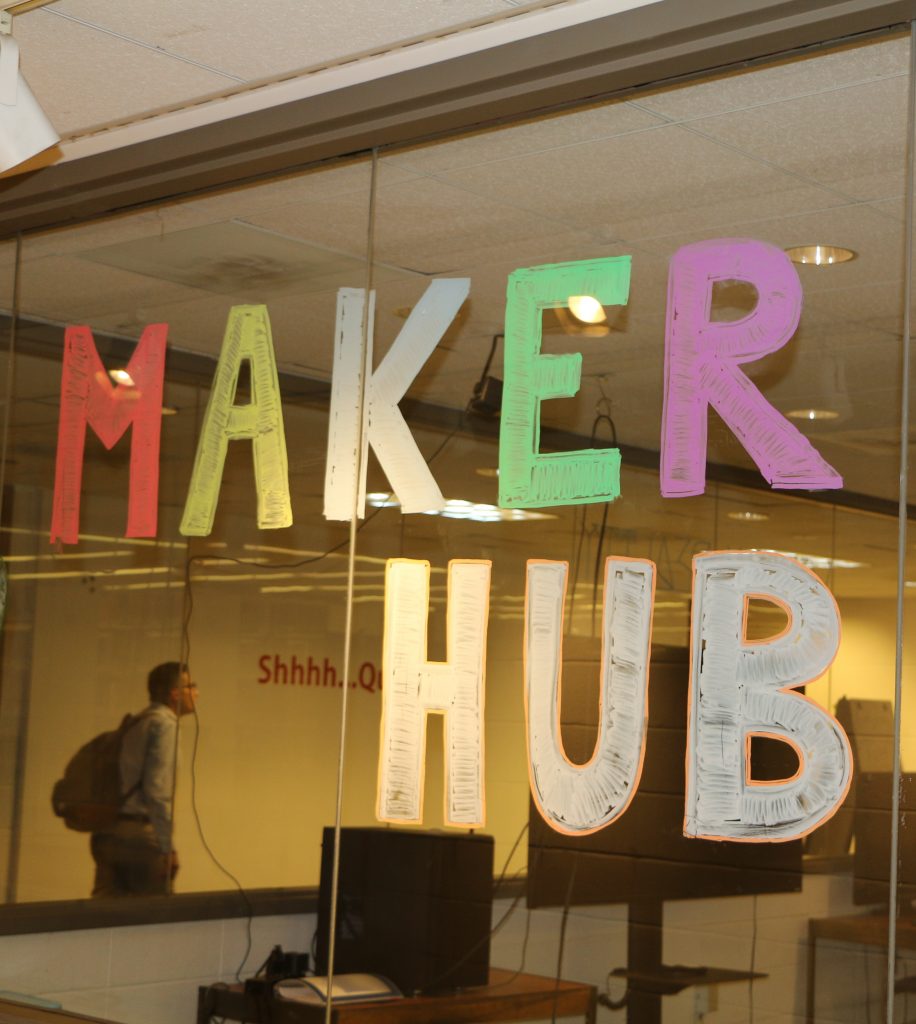
One of my favorite memories of my experience on the Georgetown University Campus is my time with the faculty and students of The Maker Hub. The Maker Hub is a location that provides access to tools such as 3D printers, laser cutters, and fabrication supplies. This is designed to help student inventors and creative teams. I had the opportunity to sit in on a class focused on building low-cost air pollution monitors. The small systems are made by students at The Maker Hub. This was far from my visions of a classroom setting. It’s not just another lecture or lab. This class is dedicated to a project that can truly make change around the world. The young people and the Georgetown staff dedicated to building these systems are changemakers in every way. Each student involved with this project is paired with a partner school in a developing country. This allows them to test air quality and to analyze data. Currently, they are working with partners in Lima, Peru and Kathmandu, Nepal.
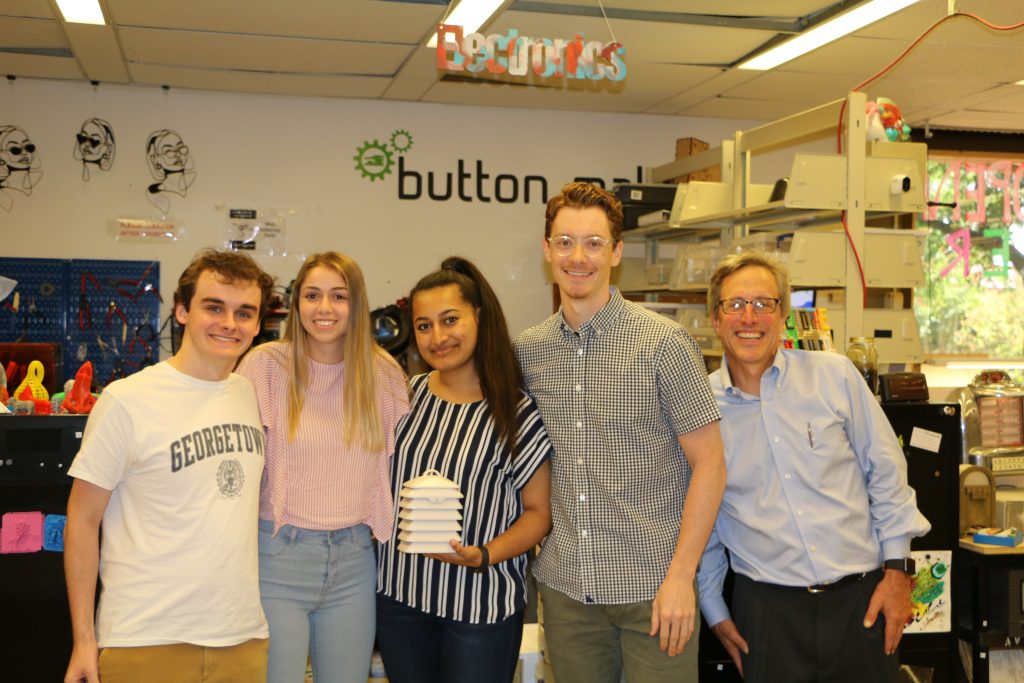
1 in 8 deaths in the world are caused by air quality in some way. Even now in the early stages, these monitors can be very impactful for pollution situations. One team member lives near a major plant that was breaking many major pollution laws. Instead of correcting it, the company would pay fines because it was cheaper than solving the problem. It took well over a decade for it to actually shut down. Had the monitor been available the air quality could have been detected there. That data could have then been taken to legislation which could have been very impactful for that community. That’s what those at The Maker Hub are trying to get to happen around the world.
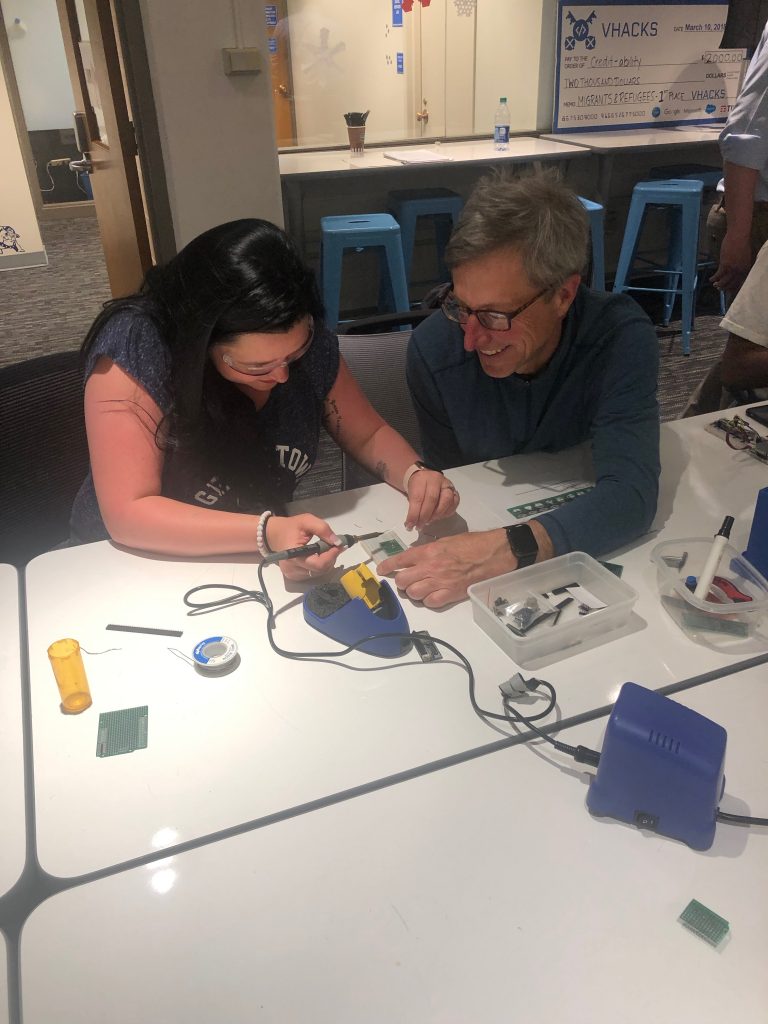
Most tools at The Maker Hub are free to use and volunteers and staff are available to teach individuals how to use the equipment. The Maker Hub strives to be a ‘drop-in learning’ space. One student I met said “It’s a place where you can meet like-minded people with an Engineering mind set. But also, I can’t own all of the tools I might want to use. So, having a space to go and have people available that want to help you use those things is a highly impactful value.”
Technology provides a level of communication we have now that we never had before. We went from telegraphs to phone calls and dial up. Now the English language is common around the world. You can communicate with people via email and video chat. When the team at The Maker Hub reach out to these schools and partners around the world they can have real- time communications and convey problems and in turn help one another. This allows relationships to be maintained which traditionally would have taken a long time. You can now have a video chat call of modest quality nearly anywhere today.
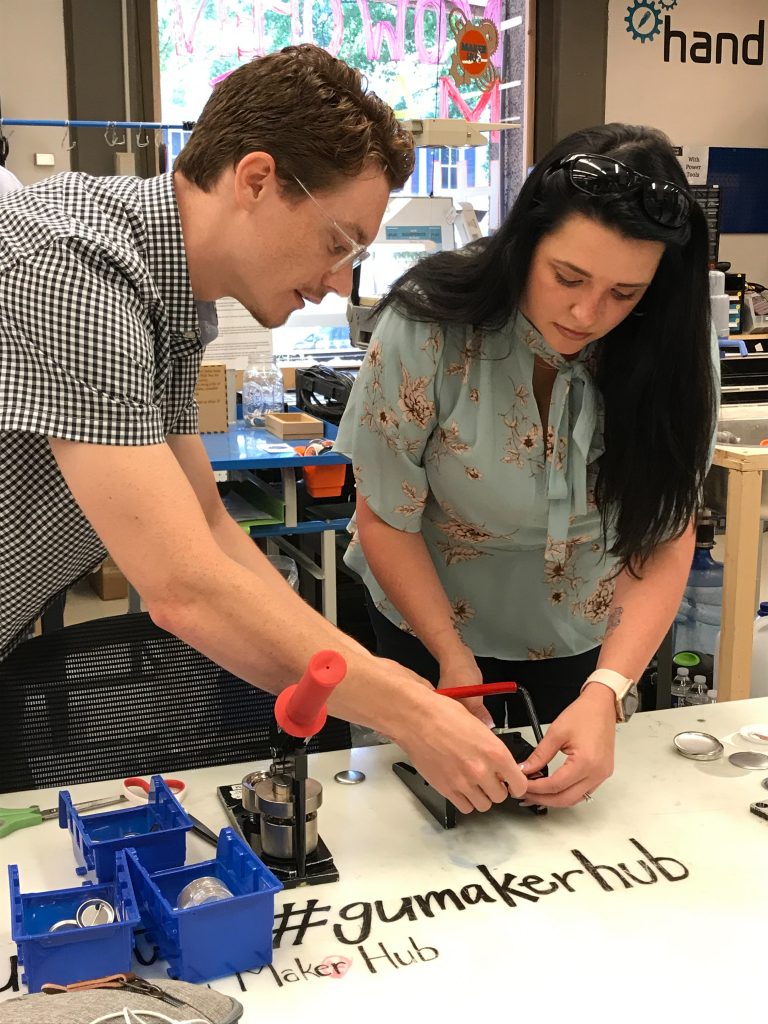
The Maker Hub
The students are not just passionate about this because they are hoping for an A. They fund much of this on their own. They put their time and money into it which proves they are dedicated to making a change in our world. However, they would not be able to push boundaries without The Maker Hub. The tools available allow the students to be able to build these monitors. Of course, like anything, there’s only so much you can do without the proper funding. The team is currently working on that. It’s goes beyond just paying students or a team. When you pair a project like this with other jobs or classes then there’s even more access to outreach. Which means even more communities will see an impact from these incredible young people.
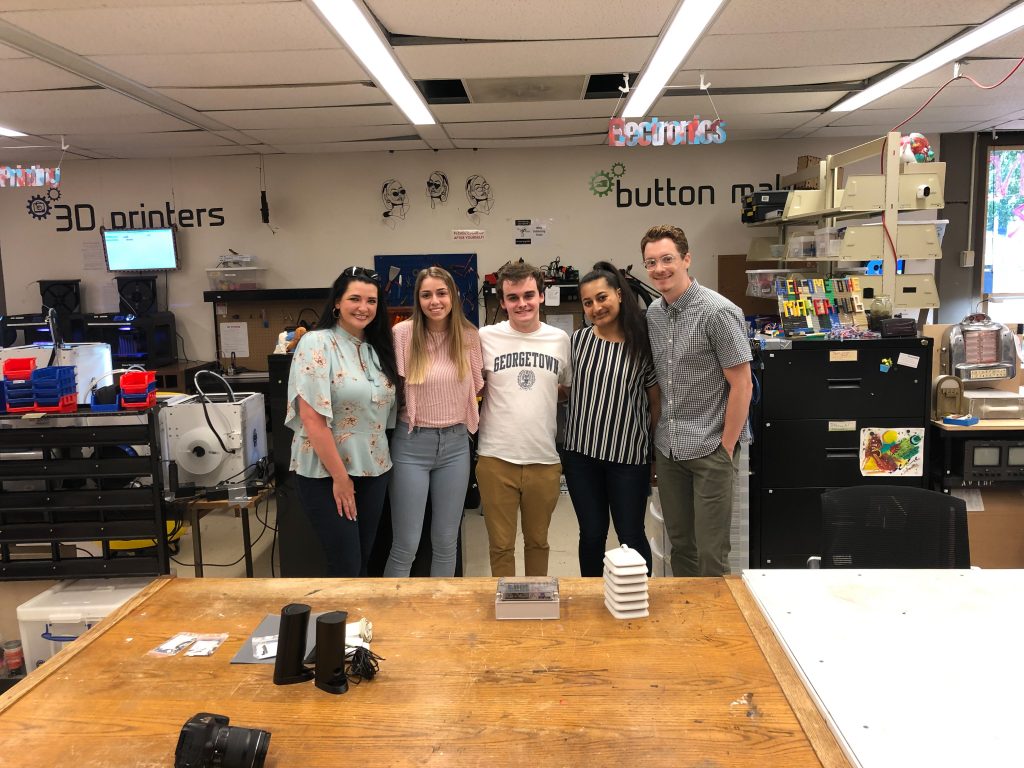

1 comment
These students are indeed amazing – a blend of talent and perseverance nicely wrapped in a soul that cares. Thank you Amelia for telling their story.